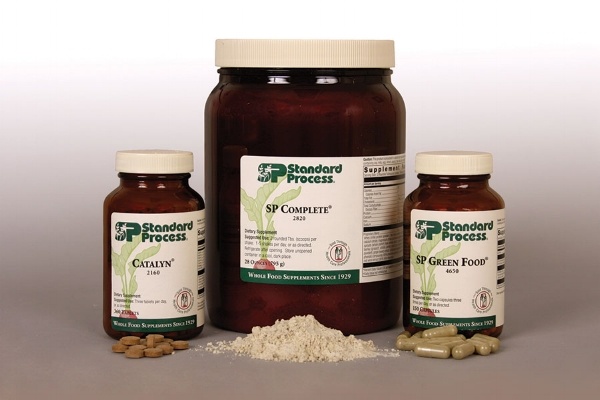Supply chain management has transformed over the last few years a great deal. In the past, businesses primarily utilized enterprise resource planning (ERP) systems for objectives such as collaboration and data tracking across the entire production facility. This has begun to slowly change as there has been an integration of spreadsheets, ERP systems, and other cloud-based software that allow manufacturers to schedule and plan their production schedule in a much simpler manner.
This may soon become messy and disconnected, which raises questions about areas pertaining to forecast numbers, inventory numbers, and what to do when unforeseen events such as natural disasters come into play. Without connection, these questions may go unanswered and as competition is rising, you can not afford to continue slowly or with poor planning. This is why supply chain planning is extremely vital to your manufacturing operation. Supply chain planning is the process of planning a product from raw material to the customer. It includes supply planning, production planning, demand planning, and sales and operations planning. All of these areas are essential to understand and enhance within your operation in order to achieve the goal of raising profits and cutting costs.
The Five Steps of Supply Chain Planning
In order to effectively enhance these areas, it is a must to integrate the five steps of supply chain planning into your production process. Utilizing these steps can aid areas of your supply chain process through waste reduction, cost reduction, profit increase, and more. The five steps of supply chain planning include the following:
- Moving to Real-Time Supply Chain Planning - Whenever a company utilizes ERP systems and spreadsheets for production planning, they will usually rely on historical data. This results in the small amount of wiggle room for potential changes if any disruptions occur in demand or supply. For example, a company may estimate the number of products it will sell in the next quarter through historical data. But what if a natural disaster such as a hurricane or tornado destroys one of your distribution centers, ultimately leading to little supply on shelves? With real-time supply chain planning, you are able to create “what-if” scenarios and plan more effectively for any potential hindrances within production.
- Unifying Supply Chain Planning with Enterprise Planning - The second step is connecting traditionally siloed supply chain planning to sales and operations/financial planning. Companies benefit from synchronizing their short-term operational planning with wider business planning processes to make real-time updates to inventory forecasts and supply. Deploying real-time S&OP solutions that enable enterprise-wide collaboration means key stakeholders across the business may create new scenarios and quickly asses how to utilize their resources wisely to efficiently optimize profitability when an unforeseen event happens.
- Anticipating the Demand of the End Customers - Anticipating the demand of customers is an obstacle that many manufacturers face, especially for consumer-packaged goods companies. Utilizing end-to-end visibility across the supply chain and beyond the existing network of wholesalers and retailers to sense demand signals from customers. When you are able to identify changing consumer sentiments and assess how that changes demand for your product, it will benefit your production facility immensely.
- Leveraging Real-Time Data Across All Points of The Supply Chain - Supply chain usually involves a multitude of suppliers, channels, customers, and more. This tends to make models become large and potentially unwieldy, especially if you utilize spreadsheets as the source for your planning tools. Incorporating a solution that utilizes real-time data enables you to plan with accuracy and reduces your risk of stock-outs or too much inventory.
- Ensure You Have Flexibility to Cope With Change - Having technology that enables you to plan efficiently and react quickly makes disruptions much more simpler to deal with. This is due to re-planning and re-forecasting becoming much easier, ultimately resulting in time and money saved and profit increase.
A software that can aid with the five steps of supply chain planning is PlanetTogether’s Advanced Planning and Scheduling Software (APS). APS software allows you to have a visual representation of your production and supply chain process and manipulate areas that are in need of efficiency enhancement. These five steps of supply chain planning are extremely important for your manufacturing operation and having an Advanced Planning and Scheduling Software (APS) can easily provide insight into these steps and processes. Implementation of an Advanced Planning and Scheduling (APS) system can be implemented with ease and is being integrated into manufacturing operations around the globe.
Advanced Planning and Scheduling Software
Advanced Planning and Scheduling (APS) software has become a must for modern-day manufacturing operations due to customer demand for increased product mix and fast delivery combined with downward cost pressures. APS can be quickly integrated with a ERP/MRP software to fill gaps where these system lack planning and scheduling flexibility and accuracy. Advanced Planning and Scheduling (APS) helps planners save time while providing greater agility in updating ever-changing priorities, production schedules, and inventory plans.
- Create optimized schedules balancing production efficiency and delivery performance
- Maximize output on bottleneck resources to increase revenue
- Synchronize supply with demand to reduce inventories
- Provide company-wide visibility to capacity
- Enable scenario data-driven decision making
Implementation of Advanced Planning and Scheduling (APS) software will take your manufacturing operations to the next level of production efficiency, taking advantage of the operational data you already have in your ERP.
Related Capacity Planning Video
APS Resources
Topics: supply chain




















LEAVE A COMMENT